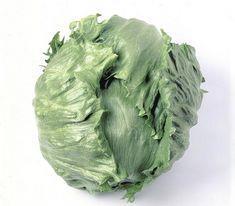
US Agricultural Research Service (ARS) plant geneticists have developed seven kinds of parent iceberg lettuces that shrug off attack by two microbial enemies.
One, a disease known as corky root, causes lettuce roots to develop ugly, yellow-to-brown lesions that harden to a corklike texture. Corky-root-infected plants may produce stunted heads 30 to 70 percent smaller than normal. The bacterium Sphingomonas suberifaciens causes the disease.
The other, lettuce mosaic, is caused by a virus of the same name. It results in stunted growth as well as unattractive mottling of leaves. Green peach aphids, about one-eighth-inch long, can spread the virus from an infected plant to an uninfected one as they move about a lettuce field, sipping plant juices.
The parent plants debuted in 2006 as the first publicly available crisphead lettuces -developed especially for California climates and soils - that come equipped with powerful natural resistance to both microbes. California is the country's number one lettuce-producing state.
These new lettuces joined the ranks of others developed at the agency's U.S. Agricultural Research Station in Salinas.
Breeding strong natural resistance into lettuce still prevails as the most economical way to defend the lettuce from disease-causing microbes